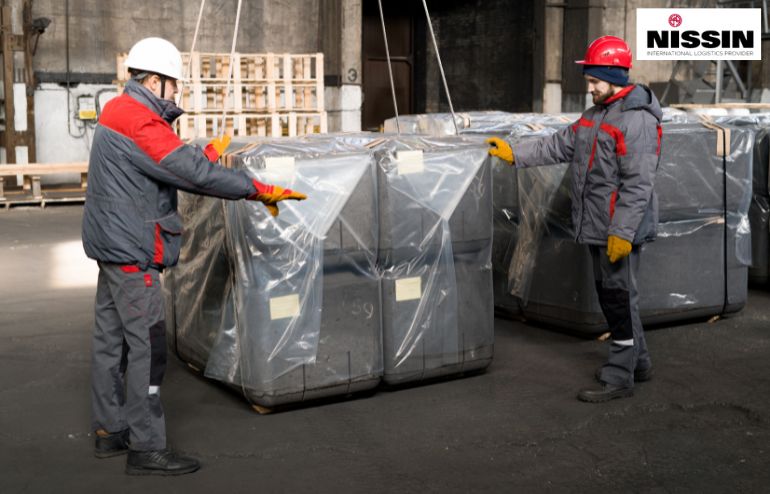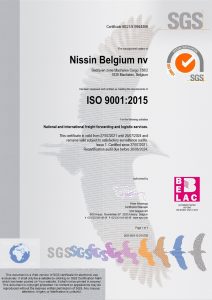Logistics Risks of Storing and Transporting Lithium-Ion Batteries
Lithium-ion batteries are widely used in various devices we rely on daily. However, their chemical composition makes them highly sensitive to mishandling during storage or transport, potentially leading to serious hazards like fires or explosions. Factors such as physical damage, improper packaging, and temperature fluctuations further increase these risks, emphasizing the importance of following safety measures to prevent accidents.
In this blog, we’ll explore the risks associated with battery shipping, provide essential lithium-ion battery handling tips, and outline key packaging standards to maintain secure transportation.
The Growing Risk of Lithium-Ion Battery Incidents
While lithium-ion batteries offer high energy output, they can also be dangerous if mishandled. Transporting lithium-ion batteries brings particular risks, including fire or explosions, especially when the batteries are exposed to improper handling or temperature fluctuations. These risks are heightened in air transport, where temperature and pressure changes can create additional dangers.
Key Tips: Storing Lithium-Ion Batteries Safely
Proper storage is essential for minimizing risks. Storing lithium-ion batteries safely involves several best practices:
1. Keep lithium-ion batteries in cool, dry places to prevent them from overheating. A temperature range of 20-25°C (68-77°F) is ideal for optimal performance.
2. Store them separately to avoid short circuits caused by contact with other metal objects. Use insulated containers or battery cases for added safety.
3. Store at 30-50% charge level to reduce strain on the battery and extend its lifespan. Avoid storing fully charged or completely drained batteries for prolonged periods.
The Risks of Overcharging and Undercharging
Both overcharging and undercharging can cause instability. Overcharging generates excess heat while undercharging can compromise the battery’s performance and safety. Always follow the manufacturer’s guidelines to maintain batteries at optimal charge levels.
Proper Packaging for Safe Transport
Safe battery shipping begins with proper packaging. Batteries should be packed with insulation to prevent physical damage and contact with terminals. Additionally, labels should clearly indicate potential risks. For large shipments, consider using fire-resistant materials to further reduce risks.
Common Risks in Battery Shipping
Transporting lithium-ion batteries comes with various challenges that, if not properly addressed, can lead to safety and performance issues. Below are the key risks associated with battery shipping:
1. Physical Damage
Lithium-ion batteries are highly prone to damage during transit. Impacts, punctures, or other mechanical stresses can compromise their structural integrity, potentially leading to short circuits, leaks, or even fires. Proper handling and protection are essential to reduce this risk.
2. Temperature Extremes
Lithium-ion batteries are sensitive to both extreme heat and cold. High temperatures can trigger thermal runaway, increasing the risk of fires, while freezing temperatures may reduce battery performance or cause permanent damage. As such, maintaining a stable temperature during transport is essential.
3. Improper Packaging
Incorrect packaging heightens the likelihood of physical damage and overheating. Without sufficient insulation, separators, or cushioning, batteries may short-circuit or suffer from external impacts. Adherence to industry-standard packaging practices minimizes these dangers.
The Importance of Compliance with Shipping Regulations
Different countries and transport methods have strict regulations when it comes to lithium-ion battery shipping rules. These include packaging, labeling, and the handling of lithium-ion batteries to minimize risks. Compliance with these rules is a must for safe transportation.
Handling and Safety Tips for Lithium-Ion Batteries
When handling lithium-ion batteries, safety precautions are a must:
1. Always wear gloves and goggles when dealing with damaged or aged batteries to protect from hazardous leaks or chemical exposure.
2. Inspect all batteries for visible damage before transporting lithium-ion batteries. Cracks, dents, or leaks should be treated as warning signs.
3. Avoid exposing batteries to heat or fire. Always store them in cool, dry environments to prevent dangerous reactions such as thermal runaway.
Nissin Belgium: Expertise in Safe Lithium-Ion Battery Storage and Transport
Nissin Belgium provides specialized logistics services to safely transport and store batteries. Our focus on safety and compliance ensures all handling procedures minimize risks. Here’s how Nissin Belgium stands out:
1. Reliable Logistics Solutions: We provide efficient and dependable logistics services for safely transporting lithium-ion batteries. Our experienced team ensures smooth operations with minimal risks during transport and storage.
2. Expert Team: Our team is well-trained in the specific handling requirements for lithium-ion batteries. We follow industry standards and ensure compliance with all safety guidelines to avoid hazards in battery shipping.
3. Temperature-Controlled Transport: We offer temperature-controlled transport for lithium-ion batteries. This service maintains batteries within safe temperature ranges, preventing overheating and reducing the risk of fires during transit.
4. Protective Packaging: Nissin’s professional packaging protects lithium-ion batteries from damage. We use durable, fire-resistant materials to minimize the chances of leakage or fire, ensuring safe and secure transport.
5. Safe Storage Services: For businesses needing to store lithium-ion batteries, we further offer secure storage solutions. Our facilities comply with international shipping regulations, reducing the risk of accidents while in storage.
Conclusion: Handling Lithium-Ion Battery Risks Effectively
The risks associated with lithium-ion batteries are real, but they can be mitigated with the right precautions. By following proper safety guidelines, adhering to battery packaging standards, and complying with shipping regulations, you can significantly reduce the risks involved.
For businesses in need of secure logistics solutions, Nissin Belgium offers expert services to safely manage lithium-ion battery shipping and storage. Contact us today at +32 2 751 44 99 or write to HowCanIHelpYou@be.nissin-eu.com for more information on our services.






